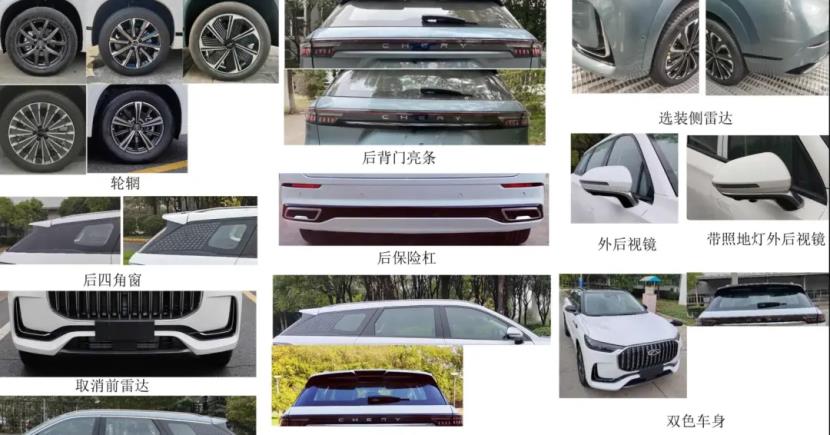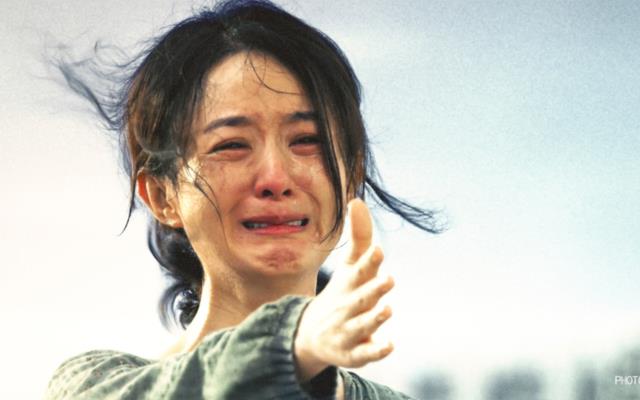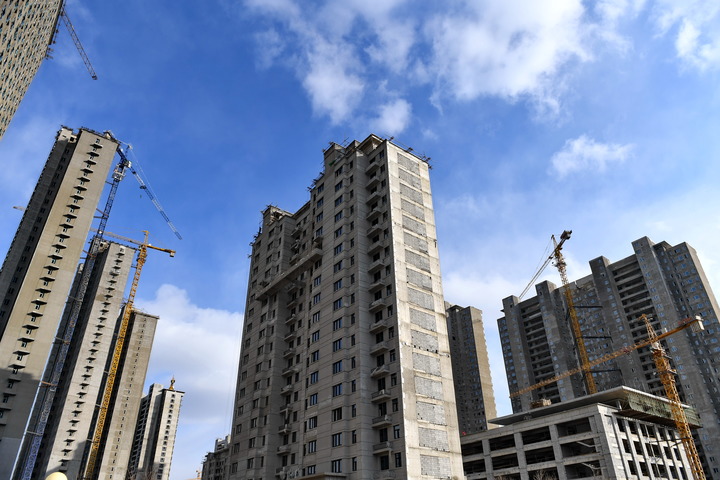Interim Measures for the Administration of Online Booking Taxi Business Services
(Ministry of Transport, Ministry of Industry and Information Technology, Ministry of Public Security, Ministry of Commerce, State Administration for Industry and Commerce, General Administration of Quality Supervision, Inspection and Quarantine, Order No. 60 of 2016 of the Cyberspace Administration of China)
The Interim Measures for the Administration of Online Booking Taxi Business Services were adopted at the 15th ministerial meeting of the Ministry of Transport on July 14, 2016, and with the approval of the Ministry of Industry and Information Technology, the Ministry of Public Security, the Ministry of Commerce, the State Administration for Industry and Commerce, the General Administration for Quality Supervision, Inspection and Quarantine, and the State Cyberspace Administration, are hereby promulgated and shall come into force on November 1, 2016.
Yang Chuantang, Minister of Transport
Miao Wei, Minister of Industry and Information Technology
Guo Shengkun, Minister of Public Security
Gao Hucheng, Minister of Commerce
Zhang Mao, Director of the SAIC
Zhi Shuping, Director of the General Administration of Quality Supervision, Inspection and Quarantine
Xu Lin, Director, Cyberspace Administration of China
July 27, 2016
Interim Measures for the Administration of Online Booking Taxi Business Services
Chapter I, General Provisions
Article 1: In order to better meet the diverse travel needs of the public, promote the integrated development of the taxi industry and the Internet, standardize the operation and service behavior of online taxi booking, and ensure the safety of operation and the legitimate rights and interests of passengers, these measures are formulated in accordance with relevant national laws and administrative regulations.
Article 2: Those who engage in online taxi booking (hereinafter referred to as online car-hailing) business services shall abide by these Measures.
The term online car-hailing business service as mentioned in these Measures refers to the business activities of building a service platform based on Internet technology, integrating supply and demand information, using qualified vehicles and drivers, and providing non-cruise booking taxi services.
The term "online booking taxi operator" (hereinafter referred to as "online car-hailing platform company") as mentioned in these Measures refers to an enterprise legal person that builds a network service platform and engages in online car-hailing business services.
Article 3: Adhere to giving priority to the development of urban public transportation and the appropriate development of taxis, and develop online car-hailing in an orderly manner in accordance with the principles of high-quality service and differentiated operation.
Online car-hailing freight rates are subject to market-regulated prices, except where the city people’s government deems it necessary to implement government-guided prices.
Article 4 The transportation department of the State Council shall be responsible for guiding the national management of online car-hailing.
The competent departments of transportation of the people’s governments of all provinces and autonomous regions, under the leadership of the people’s governments at the same level, are responsible for guiding the management of online car-hailing within their respective administrative regions.
Under the leadership of the people’s government at the same level, the municipal or county-level transportation department directly under the Central Government or the other taxi administrative department designated by the people’s government (hereinafter referred to as the taxi administrative department) shall be responsible for the specific implementation of online car-hailing management.
Other relevant departments shall, in accordance with their statutory duties, exercise relevant supervision and management over online car-hailing.
Chapter 2, Online Car-hailing Platform Company
Fifth, those who apply to engage in online car-hailing operations shall have online and offline service capabilities and meet the following conditions:
(1) having the status of an enterprise legal person;
(2) Possessing the Internet platform for conducting online car-hailing business and the information and data exchange and processing capabilities appropriate to the business to be carried out, having the conditions for traffic, communications, public security, taxation, network information and other relevant regulatory departments to retrieve and inquire about relevant network data information according to law, the network service platform database is connected to the taxi administrative department supervision platform, the server is set up in the Chinese mainland, and there are cyber security management systems and security protection technical measures that meet the regulations;
(3) Where electronic payment is used, agreements shall be signed with banks and non-bank payment institutions to provide payment and settlement services.
(4) having a sound operating management system, production safety management system, and service quality assurance system;
(5) having a corresponding service organization and service capabilities at the service location;
(6) Other conditions stipulated by laws and regulations.
Foreign-invested online car-hailing operations, in addition to meeting the above conditions, shall also comply with relevant foreign investment laws and regulations.
Article 6: Those who apply to engage in online car-hailing business shall submit an application to the corresponding taxi administrative department according to the business area, and submit the following materials:
(A) online booking taxi business application form (see attachment);
(2) The identity of the investor, the person in charge, the credit certificate and its photocopy, the identity certificate of the handler and its photocopy and the engagement letter;
(3) The business license of an enterprise as a legal person shall also be submitted if it belongs to a branch, and the foreign-invested enterprise shall also provide the foreign-invested enterprise approval certificate.
(4) Information on the office space, responsible personnel, and management personnel where the service is located;
(5) Proof materials for having Internet platforms and information data interaction and processing capabilities, proof materials for transportation, communications, public security, taxation, network information and other relevant regulatory departments to retrieve and inquire about relevant network data and information conditions according to law, description of database access, description of the situation where the server is set up in the Chinese mainland, proof materials for establishing and implementing cyber security management systems and security protection technical measures according to law;
(6) Where electronic payment is used, payment and settlement service agreements signed with banks and non-bank payment institutions shall be provided.
(7) the text of the operation management system, production safety management system, and service quality assurance system;
(8) Other materials required by laws and regulations.
Those who engage in online car-hailing business for the first time shall apply to the corresponding taxi administrative department at the place where the enterprise is registered. The relevant online service capability materials in items (5) and (6) of the preceding paragraph shall be reviewed and identified by the provincial transportation department at the place where the online car-hailing platform company is registered, and the departments of communications, public security, taxation, online information, and the People’s Bank of China and other departments at the same level shall review and identify, and provide the corresponding identification results. The identification results shall be valid nationwide. If an online car-hailing platform company applies for engaging in online car-hailing business outside the place of registration, it shall submit the results of the online service capability identification in items (5) and (6) of
Other offline service capability materials shall be reviewed by the taxi administrative department that accepts the application.
Article 7 The taxi administrative department shall make a decision on whether to license or not to license within 20 days from the date of acceptance. If a decision cannot be made within 20 days, it may be extended for 10 days with the approval of the person in charge of the implementing authority, and the applicant shall be informed of the reasons for the extension.
Eighth Article: Where the taxi administrative department makes an administrative license decision on the application for online car-hailing business, it shall clarify the business scope, business area, business period, etc., and issue the "Online Booking Taxi Business License".
Article 9 If the taxi administrative department makes a decision not to grant administrative license to an application that does not meet the prescribed conditions, it shall issue a "Decision Not to Grant Administrative License" to the applicant.
Article 10 An online taxi-hailing platform company shall conduct relevant business only after obtaining the corresponding "Online Booking Taxi Business License" and applying to the provincial communications authority at the place where the enterprise is registered for the filing of Internet information services. The filing content includes the real identity information of the operator, access information, and the "Online Booking Taxi Business License" issued by the taxi administrative department. Those involved in the operation of telecommunications business shall also comply with the relevant provisions on telecommunications management.
The online car-hailing platform company shall, within 30 days from the date of the official connection of the network, go through the filing formalities at the receiving organ designated by the public security organ of the provincial people’s government where the management and operation organ of the online car-hailing platform company is located.
Article 11 If an online car-hailing platform company suspends or terminates its operation, it shall report in writing to the taxi administrative department where the service is located 30 days in advance, explain the relevant situation, notify the owner and driver of the vehicle providing the service, and make an announcement to the public. If the operation is terminated, the corresponding "Online Booking Taxi Business License" shall be returned to the original licensing authority.
Chapter 3, Online Car-hailing Vehicles and Drivers
Article 12 Vehicles that plan to engage in online car-hailing operations shall meet the following conditions:
(1) Passenger cars with 7 seats or less;
(2) Install vehicle satellite positioning devices and emergency alarm devices with driving record functions;
(III) The technical performance of the vehicle meets the requirements of relevant standards for operational safety.
The specific standards and operating requirements for vehicles shall be determined by the corresponding taxi administrative department in accordance with the development principle of high-quality service and differentiated operation, taking into account the actual local situation.
Article 13: The taxi administrative department at the location where the service is located shall, upon application by the vehicle owner or the online car-hailing platform company, and after review according to the conditions stipulated in Article 12, issue a "Online Booking Taxi Transport Certificate" to the vehicles that meet the conditions and are registered as reserved for rental passenger transportation.
If the city people’s government has other provisions on the issuance of the "Online Booking Taxi Transport Certificate" for online car-hailing, such provisions shall prevail.
14th Article: Drivers who engage in online ride-hailing services shall meet the following conditions:
(1) Obtain a motor vehicle driver’s license of the corresponding type and have more than 3 years of driving experience;
(2) No record of traffic accident or dangerous driving, no record of drug abuse, no record of driving after drinking, and no record of 12 points in the last three consecutive scoring periods;
(3) No violent criminal record;
(4) Other conditions stipulated by the city people’s government.
15th Article: The municipal taxi administrative department in the district where the service is located shall, upon application by the driver or the online taxi platform company, verify and assess according to the conditions stipulated in Article 14, issue the "Online Booking Taxi Driver Certificate" to the qualified and qualified drivers.
Chapter 4, Online Car-hailing Business Behavior
Article 16: The online ride-hailing platform company assumes the responsibility of the carrier and shall ensure the safety of operation and protect the legitimate rights and interests of passengers.
17th Article: Online car-hailing platform companies shall ensure that the vehicles providing services have legal operating qualifications, are in good technical condition, have reliable safety performance, and have relevant insurance for operating vehicles, ensure that the vehicles providing services online are consistent with the vehicles actually providing services offline, and report the vehicle-related information to the administrative department of the taxi service location.
Article 18 The online car-hailing platform company shall ensure that the drivers providing services have legal professional qualifications, and in accordance with relevant laws and regulations, sign various forms of employment contracts or agreements with the drivers according to the characteristics of working hours, service frequency, etc., to clarify the rights and obligations of both parties. The online car-hailing platform company shall safeguard and protect the legitimate rights and interests of drivers, carry out pre-job training and daily education on relevant laws and regulations, professional ethics, service norms, safe operation, etc., to ensure that the drivers providing services online are consistent with the drivers actually providing services offline, and report the relevant information of the driver to the taxi administrative department where the service is located.
Online car-hailing platform companies shall record the information content, user registration information, identity authentication information, order logs, online logs, online transaction logs, driving track logs and other data released by drivers and car-hailing people on their service platforms and back them up.
Article 19: Online ride-hailing platform companies shall announce and determine the metering methods that comply with relevant state regulations, clarify service items and quality commitments, establish a service evaluation system and a passenger complaint handling system, and truthfully collect and record driver service information. When providing online ride-hailing services, provide driver names, photos, mobile phone numbers, service evaluation results, and vehicle license plates.
Article 20: Online car-hailing platform companies shall reasonably determine the online car-hailing freight rates, implement clear pricing, and provide passengers with corresponding taxi invoices.
Article 21: Online ride-hailing platform companies shall not impede fair competition in the market, nor infringe upon the legitimate rights and interests of passengers or the public interest.
Online car-hailing platform companies shall not engage in unfair price behaviors such as crowding out competitors or monopolizing the market, disrupting the normal market order at a price lower than the cost, harming the interests of the state or the legitimate rights and interests of other operators, and shall not engage in price violations.
Article 22: Online car-hailing shall engage in business activities within the licensed business area. If it exceeds the licensed business area, the origin and destination points shall be within the licensed business area.
Article 23: Online ride-hailing platform companies shall pay taxes according to law, purchase carrier liability insurance and other related insurance for passengers, and fully protect the rights and interests of passengers.
Article 24: Online ride-hailing platform companies shall strengthen security management, implement operational and network security measures, strictly protect and manage data security, improve security prevention and anti-risk capabilities, and support relevant departments in relevant work.
Article 25: Online ride-hailing platform companies and drivers providing business services shall comply with relevant national operating service standards, shall not dump passengers on the way or deliberately detour, shall not charge illegally, and shall not retaliate against passengers who report, complain about the quality of their services, or make unsatisfactory evaluations of their services.
Article 26 An online car-hailing platform company shall, through its service platform, inform the purpose, method and scope of the collection and use of personal information such as drivers, riders and passengers in a prominent manner. Without the express consent of the information subject, an online car-hailing platform company shall not use the aforementioned personal information for other business purposes.
Online ride-hailing platform companies shall not collect personal information of drivers, riders, and passengers beyond the scope necessary to provide online ride-hailing services.
Except for cooperating with state organs in exercising supervision and inspection powers or criminal investigation powers in accordance with the law, online ride-hailing platform companies shall not provide any third party with the names, contact information, home addresses, bank accounts or payment accounts, geographical locations, travel routes and other personal information of drivers, ride-hailing and passengers, and shall not disclose sensitive information related to national security such as geographical coordinates and geographical markers. After information leakage occurs, online ride-hailing platform companies shall promptly report to the relevant competent authorities and take timely and effective remedial measures.
Article 27: Online car-hailing platform companies shall abide by the relevant provisions of the national network and information security, the personal information collected and the business data generated shall be stored and used in the Chinese mainland, and the retention period shall not be less than 2 years.
Online car-hailing platform companies shall not use their service platforms to publish information prohibited by laws and regulations, and shall not provide convenience for enterprises, individuals, and other groups and organizations to publish harmful information, and take effective measures to filter and block the dissemination of harmful information. If it is discovered that others use their online service platforms to disseminate harmful information, it shall immediately stop the transmission, keep relevant records, and report to the relevant state organs.
Online car-hailing platform companies shall, in accordance with the law, provide necessary technical support and assistance for the public security organs to carry out national security work and prevent and investigate illegal and criminal activities in accordance with the law.
Article 28 No enterprise or individual shall provide information docking to vehicles and drivers who have not obtained legal qualifications to carry out online car-hailing business services. It shall not provide online car-hailing business services in the name of private passenger car sharing.
Online car-hailing vehicles and drivers shall not provide operation services through network service platforms that have not obtained a business license.
Chapter V, Supervision and Inspection
Article 29 The taxi administrative department shall build and improve the government supervision platform to share information with the online car-hailing platform. Shared information shall include basic information about vehicles and drivers, service quality, and passenger evaluation information.
Taxi administrative departments should strengthen the supervision of the online car-hailing market, and strengthen the qualification review and certificate issuance management of online car-hailing platform companies, vehicles, and drivers.
Taxi administrative departments shall regularly organize and conduct online ride-hailing service quality assessments, and promptly publish to the public the basic information of local online ride-hailing platform companies, the results of service quality assessments, and the handling of passenger complaints.
Taxi administrative supervisors, public security and other departments have the right to obtain and consult relevant data such as the registration, operation and transactions of online car-hailing platform companies within their jurisdiction according to management needs.
Article 30: Communications departments, public security, and cyber information departments shall, in accordance with their respective duties, investigate and punish online car-hailing platform companies for illegally collecting, storing, processing, and using relevant personal information, violating relevant regulations on Internet information services, endangering network and information security, and using online car-hailing service platforms to publish harmful information or providing convenience for enterprises, individuals, and other organizations to publish harmful information, and cooperate with the taxi administrative department to deal with online car-hailing platform companies that are found to have violated laws and regulations.
Public security organs and cyber information departments shall, in accordance with their respective duties, supervise and inspect the implementation of cyber security management systems and security protection technical measures, and prevent, investigate and punish relevant illegal and criminal activities.
Article 31: Departments of development and reform, pricing, communications, public security, human resources and social security, commerce, the People’s Bank of China, taxation, industry and commerce, quality inspection, and online information shall, in accordance with their respective duties, conduct relevant supervision and inspection of online car-hailing business activities, and deal with illegal acts according to law.
Article 32 All relevant departments shall, in accordance with their duties, establish the credit records of online car-hailing platform companies and drivers, and incorporate them into the national credit information sharing platform. At the same time, the credit information such as administrative licenses and administrative penalties of online car-hailing platform companies shall be publicized on the national enterprise credit information publicity system.
Article 33: Taxi industry associations shall establish a list of online ride-hailing platform companies and drivers with bad records, and strengthen industry self-discipline.
Chapter VI, Legal Liability
Article 34 Anyone who violates these regulations and commits any of the following acts shall be ordered to make corrections, given a warning, and fined not less than 10,000 yuan but not more than 30,000 yuan by the taxi administrative department at or above the county level; if a crime is constituted, criminal responsibility shall be investigated according to law:
(1) Without obtaining a business license, engaging in online car-hailing activities without authorization or in disguise;
(2) Forging, altering or using forged, altered or invalid "Online Booking Taxi Transport License" and "Online Booking Taxi Driver License" to engage in online car-hailing business activities.
Article 35: Where an online car-hailing platform company violates these Provisions and commits any of the following acts, the administrative department for taxis at or above the county level and the pricing department shall, in accordance with their duties, order it to make corrections and impose a fine of not less than 5,000 yuan but not more than 10,000 yuan for each violation; if the circumstances are serious, a fine of not less than 10,000 yuan but not more than 30,000 yuan shall be imposed:
(1) The service vehicle has not obtained the "Online Booking Taxi Transportation Certificate", or the online service vehicle is inconsistent with the offline service vehicle.
(2) The driver providing the service has not obtained the "Online Booking Taxi Driver License", or the driver providing the service online is inconsistent with the driver actually providing the service offline.
(3) Failure to ensure that the vehicle is in good technical condition as required.
(4) The origin and destination are not engaged in online car-hailing business activities in the licensed business area;
(5) Failure to report the relevant information of the vehicle and driver providing the service to the taxi administrative department where the service is located in accordance with regulations;
(6) Failure to formulate Service Quality Standards and establish and implement complaint reporting systems in accordance with regulations;
(7) Failure to provide shared information in accordance with regulations, or failure to cooperate with the taxi administrative department in retrieving and consulting relevant data information;
(8) Failure to fulfill management responsibilities, and serious violations of relevant national operating service standards such as dumping customers, deliberately detouring, and illegally charging fees.
If an online car-hailing platform company no longer has the ability to provide online and offline services or has committed serious illegal acts, the administrative department for taxis at or above the county level shall order it to suspend business for rectification and revoke relevant licenses in accordance with the relevant provisions of relevant laws and regulations.
36th Article: Where an online ride-hailing driver violates these Provisions and falls under any of the following circumstances, the administrative department for taxis at or above the county level and the pricing department shall order them to make corrections according to their duties, and impose a fine of not less than 50 yuan but not more than 200 yuan for each violation:
(1) Failure to carry the "Online Booking Taxi Transport Certificate" and "Online Booking Taxi Driver Permit" in accordance with regulations;
(2) Dumping passengers on the way or deliberately taking a detour;
(3) Illegal charges;
(4) Acts of retaliation against passengers who report, complain about the quality of their services, or make unsatisfactory evaluations of their services.
If an online taxi driver no longer has the conditions for employment or has committed serious illegal acts, the taxi administrative department at or above the county level shall revoke or revoke the license certificate in accordance with the relevant provisions of relevant laws and regulations.
The information on administrative penalties for online ride-hailing drivers is included in the credit records of drivers and online ride-hailing platform companies.
37th Article: Where an online car-hailing platform company violates the relevant provisions of Articles 10, 18, 26, and 27 of these Provisions, it shall be punished by the network information department, the public security organ, and the communications department according to their respective duties in accordance with relevant laws and regulations; if it causes losses to the information subject, it shall bear civil liability according to law; if it is suspected of committing a crime, it shall be investigated for criminal responsibility according to law.
Online ride-hailing platform companies and online ride-hailing drivers who illegally use or disclose the personal information of ride-hailing people and passengers shall be fined not less than 2,000 yuan but not more than 10,000 yuan by the public security, online information and other departments in accordance with their respective duties; if losses are caused to the information subject, they shall bear civil liability according to law; if suspected of committing a crime, they shall be investigated for criminal responsibility according to law.
If an online car-hailing platform company refuses to perform or fails to provide technical support and assistance for the public security organs to carry out national security work according to law, prevent or investigate illegal and criminal activities, it shall be punished by the public security organs according to law; if a crime is constituted, criminal responsibility shall be investigated according to law.
Chapter VII, Supplementary Provisions
Article 38: Private passenger car sharing, also known as carpooling and ride-sharing, shall be implemented in accordance with the relevant provisions of the city people’s government.
39th, when the mileage of the network car reaches 600,000 kilometers, it will be forcibly scrapped. When the mileage does not reach 600,000 kilometers but the service life reaches 8 years, it will withdraw from the network car business.
Small and micro non-operating passenger cars registered as scheduled rental passenger transportation will be scrapped according to the online car-hailing scrapping standard. Other small and micro-operating passenger cars registered as scheduled rental passenger transportation will be scrapped according to the standards reached first in the scrapping standards for operating passenger cars of this type and the online car-hailing scrapping standards.
The relevant departments of the people’s governments of provinces, autonomous regions and municipalities directly under the Central Government shall formulate specific regulations on the scrapping standards for online car-hailing in light of local actual conditions, and report them to the departments of commerce, public security and transportation of the State Council for the record.
Article 40 These Measures shall come into force on November 1, 2016. All localities may formulate specific implementation rules in accordance with these Measures in light of local actual conditions.
Attachment:Online booking taxi business application form.docx















